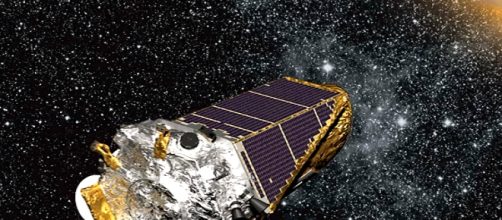NASA has called a press conference to reveal a breakthrough discovery from its alien-hunting Kepler Telescope. The discovery was driven by Google’s machine-learning artificial intelligence software. This telescope is operated by NASA to discover other earths, some of which could support life. Here are a few things you need to know about the Kepler telescope.
Kepler's new discovery
The agency will hold a news conference Thursday (Dec. 14) at 1 p.m. EST (1800 GMT). Nasa says that the news will focus on work done by its Kepler planet-hunting telescope which has been working with Google's AI system to find potentially-habitable worlds.
The Kepler mission has spotted thousands of exoplanets since 2014, with 21 Earth-sized planets now known to orbit within the habitable zones of their stars.
Kepler has found several planets orbiting their star in the so-called "Goldilocks Zone," where it is warm enough for liquid water to flow. The announcement may be related to one of those planets. In issuing the release of the press conference, NASA pointed to a new way of analyzing data from Kepler.
The officials at NASA released a press note that hinted at the discovery of alien life. The press note said, “The team at the Kepler Space Telescope has been searching for extra-terrestrial life since 2009, and now they have found something spell bounding.
2,500 alien worlds found
Kepler spots alien worlds by noticing the tiny brightness dips they cause when they cross the face of their host star from the spacecraft's perspective. It has found more than 2,500 confirmed alien worlds - about 70% of all known exoplanets. Last year, NASA announced the incredible find of nine planets orbiting the star TRAPPIST-1.
Since 2014, the Kepler Space Telescope is now in its fifteenth observing campaign of its K2 extended mission, studying more than 23,000 objects located in the direction of the constellation Scorpius. Unlike its predecessor, the K2 mission studies a different region of the sky known as the ecliptic plane.
As the collection of space data increases, NASA is currently exploring the infusion of Artificial Intelligence (AI) into space communications networks to meet demand and increase efficiency.
On Thursday, there will be a question-and-answer session following the main announcement. Members of the public will be able to submit questions through Twitter by using the hashtag #askNASA.


